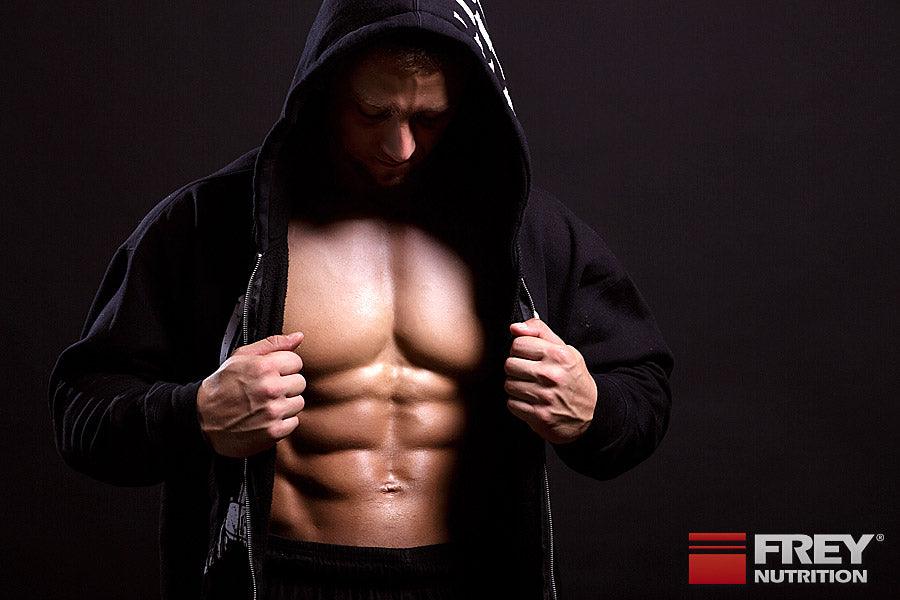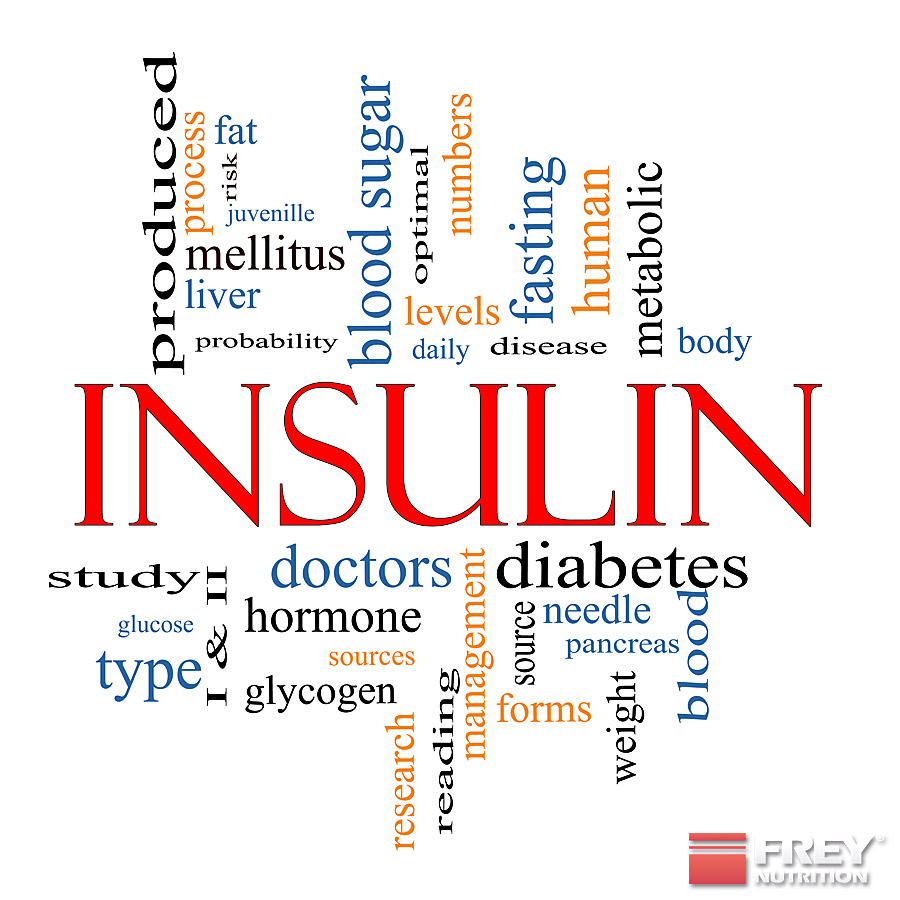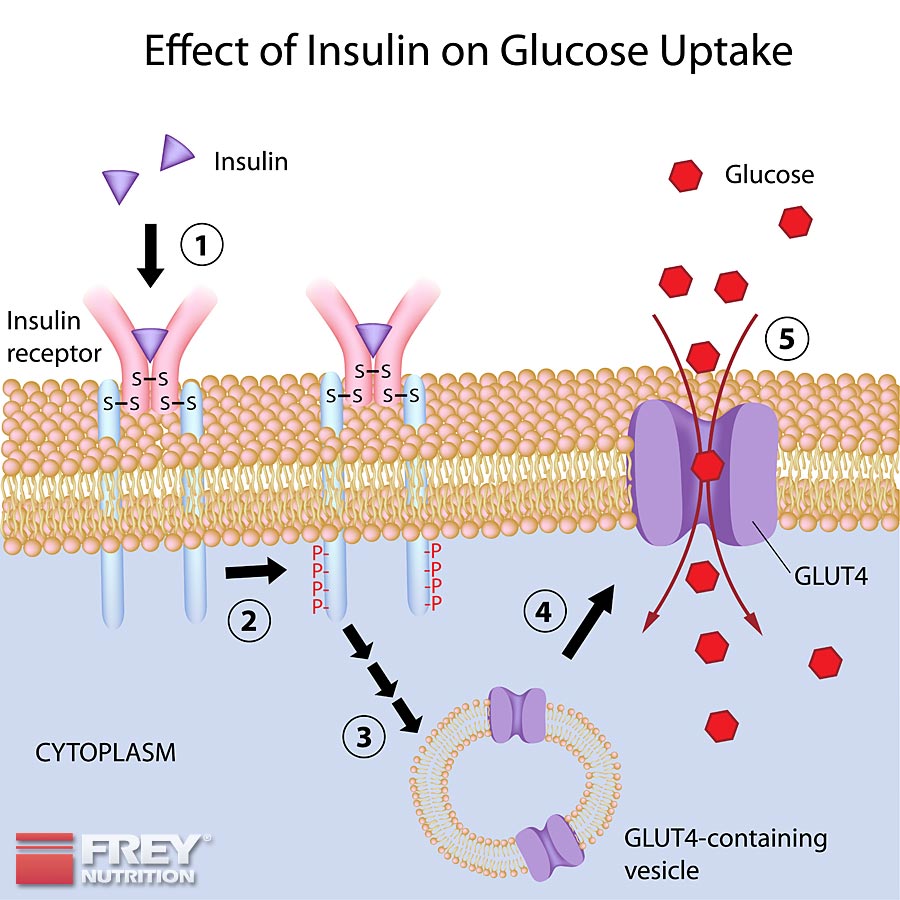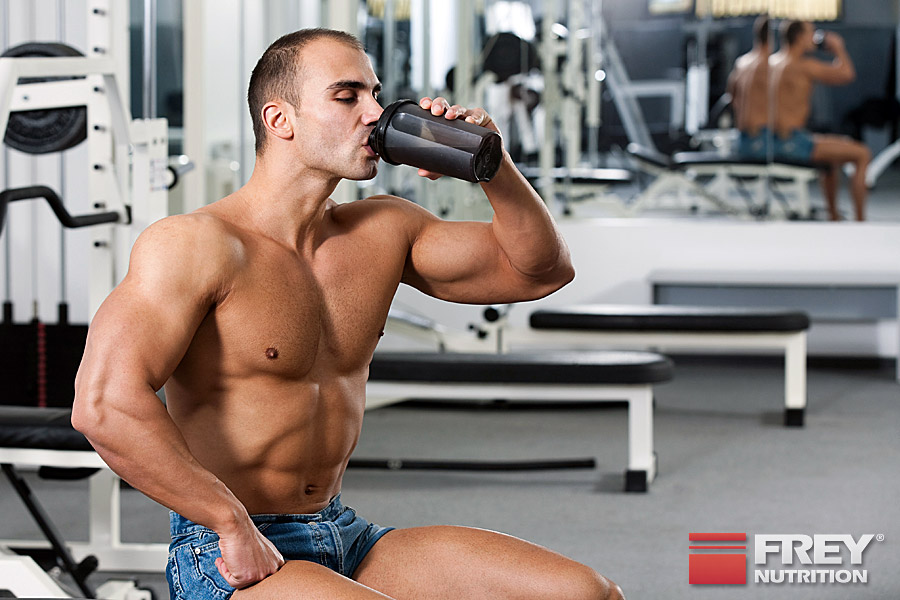THE BASICS OF THE INSULIN THEORY
The basics of insulin theory are 1. the targeted release of insulin for anabolic phases and 2. the reduction of insulin for diet phases. Insulin, as one of the body's most anabolic hormones, has a major impact on muscle building.
Insulin is extremely effective in initiating anabolic (= muscle-building) processes, but if released excessively, especially at the wrong time, it creates the basis for unwanted fat storage.
Not only the muscle cells, but also the fat cells are affected by insulin secretion and this is where the dilemma begins. This consists of the balancing act of high insulin secretion for muscle building on the one hand and the time limit for fat loss on the other. A sensibly timed insulin manipulation is therefore the main goal.
INSULIN | THE ANABOLIC HORMONE
Insulin has two main functions that are important to us. Firstly, it is responsible for the transport of carbohydrates and proteins from food into the muscle cells, which is achieved by increasing the permeability of the muscle membranes. Nutrients such as proteins, amino acids, carbohydrates, creatine and especially minerals are transported into the muscles by insulin and absorbed by the muscle cells.
The second function is the storage of nutritional calories in adipose tissue. This process begins precisely when calories are consumed in excess of daily energy requirements and are not burned through physical activity. The first characteristic should be encouraged and the second avoided.
The decisive factor here is the time component and the characteristics of when the body can best take advantage of an increased insulin release, triggered by simple sugars, for example, to achieve the anabolic effects required for muscle building, and when insulin release should be avoided. Insulin is therefore both friend and foe. By using the insulin theory and adhering to its principles, we can make insulin always be friendly to us!
Another property of insulin is the storage of carbohydrates in the muscles as muscle glycogen and the temporary storage of glucose not used for energy in the liver as glycogen. By splitting glycogen (releasing glucose), the liver ensures that glucose is quickly released into the blood when energy is needed. Carbohydrates consumed in excess of requirements are stored in the fatty tissue as depot fat if they are not used up through sport or other physical activity. These briefly summarized properties and functions of the body's own insulin levels are of crucial importance for the insulin theory.
THE INSULIN THEORY IN DIET PHASES
During diet phases, you should primarily eat foods with a low to moderate GI (< 50). This keeps blood sugar levels low, meaning less insulin is released. A low insulin level provides optimal conditions for increased fat loss.
IF INSULIN LEVELS ARE LOW, GROWTH HORMONES CAN BE RELEASED AND VICE VERSA.
In addition to low blood sugar levels, fat burning is also promoted by the fact that growth hormones can be released optimally when insulin levels are low.
The growth hormone (= HGH / Human Growth Hormone) is a highly anabolic hormone in our body and also stimulates lipolysis (= fat burning). If the insulin level is low, more growth hormones can be produced. Conversely, a high insulin level inhibits growth hormone production. For this reason, a predominantly low insulin level is advantageous during diet phases in order to ensure optimal lipolysis and to use the body's own fats more as energy.
Especially during training and while sleeping, the pituitary gland produces increased amounts of growth hormones, which is why the intake of carbohydrates at these times should be avoided at all costs.
THE INSULIN THEORY IN BUILDING PHASES
The time component is crucial for manipulating insulin concentrations during build-up phases. High insulin levels make sense especially when the body has an increased need for nutrients. If readily available carbohydrates are consumed at precisely this time, the anabolic effect of insulin can noticeably support muscle building. A so-called "supply gap" occurs, particularly in the morning after getting up, which is almost predestined for increased insulin secretion. In the morning after getting up, blood sugar levels are particularly low due to the long time (8 to 12 hours) after the previous day's dinner. At this time, large amounts of carbohydrates can be consumed without having to worry about storing them as fat. Depending on body weight and training progress, a meal with 70 to 150 g of carbohydrates in a quickly available form with a high GI of 70 to 100 is recommended in the morning.
"EAT LIKE A KING FOR BREAKFAST, LIKE A MERCHANT FOR LUNCH AND LIKE A FARMER FOR DINNER. ...AND AFTER TRAINING LIKE AN EMPEROR!" (QUOTE: A. FREY)
Athletes therefore often use carbohydrates in liquid form as maltodextrin powder in order to not only quickly replenish glycogen but also to shorten the time they spend in the stomach, as carbohydrates in liquid form are digested much more quickly. This leads to a strong insulin spike and nutrients such as proteins and carbohydrates are transported more rapidly to the muscle cells. The carbohydrates supplied also help the body to boost its metabolism. It is not for nothing that they say: "Eat like a king for breakfast, like a merchant for lunch and like a peasant for dinner!" There is really nothing more to add to this, except that for bodybuilders and fitness athletes the addition applies: "and eat like an emperor after training!"
THE ANABOLIC WINDOW
The first meal after training is at least as important as breakfast in the morning. After intensive strength training, especially in combination with excessive aerobic exercise, the body's own carbohydrate stores are used up and should be replenished immediately after training. During this phase, a need arises that must be met directly after the training session; the importance here is DIRECTLY !
If you let another 20 to 30 minutes pass, the first phase of increased nutrient absorption has passed. This means that the nutrients cannot be absorbed optimally and do not have the same desired effect in terms of increased insulin secretion. The workout was therefore partly in vain because regeneration and muscle building processes cannot take place optimally. Therefore, the faster the required nutrients are provided after training, the more efficiently they are channeled into the muscle cells to ensure regeneration and muscle building processes. This time window of increased nutrient absorption is also known as the "anabolic window". It lasts for a maximum of 60 minutes after the last training set, but its absorption capacity decreases from minute to minute.
Only food in liquid form should be consumed after training. Since this no longer has to be broken down into its individual components, it is absorbed much more quickly by the body and ensures a stronger insulin release. MALTO 95 with TRIPLE WHEY (for rapid absorption of protein building blocks) represents an optimal combination.
POST-WORKOUT NUTRITION
The carbohydrates supplied quickly and effectively replenish the glycogen stores that were depleted during training, and the proteins contained in whey protein lay the foundation for muscle building.
FAT STORAGE DUE TO THE CARBOHYDRATES OF THE PWN IS UNLIKELY, SINCE THEY ARE NEEDED FIRST BY THE STRESSED MUSCLE CELLS.
This first meal after training is also known as PWN (= post-workout nutrition) and should not be missing from any good nutrition plan. There is no need to worry about fat storage due to the carbohydrates contained in the PWN, as these are first transported to where they are needed - the muscle cells. The first foundation stone for the regeneration of the trained muscles and the entire organism is laid by the PWN.
The following PWNs are based on individual goals and are compiled as follows for an 80 kg athlete as an example:
BASE PWN:
- 80G MALTO 95 (APPROX. 8 TABLESPOONS)
- 40G TRIPLE WHEY (APPROX. 4 TABLESPOONS)
ADVANCED PWN:
- 80G MALTO 95 (APPROX. 8 TABLESPOONS)
- 40G TRIPLE WHEY (APPROX. 4 TABLESPOONS)
- 8 KPS. BCAA-XTREME
- 10G PURE GLUTAMINE
Ambitious athletes with professional demands achieve a PWN that cannot be further improved by supplementing with creatine and alpha lipoic acid. This is called maximum PWN and is as follows:
PROFESSIONAL PWN:
- 80G MALTO 95 (APPROX. 8 TABLESPOONS)
- 40G TRIPLE WHEY (APPROX. 4 TABLESPOONS)
- 8 KPS. BCAA-XTREME
- 10G PURE GLUTAMINE
- 6 KPS. CREATINE X6
- 300MG ALPHA-LIPOIC ACID
All substances combine to create an enormous nutrient matrix that optimally supplies the trained muscle cells after training. Ambitious athletes cannot provide their muscles with more at this point! However, for beginners, the basic PWN is sufficient and appropriate in most cases.
MALTO 95 AS A PWN BASIS
| MALTO 95 | shoots into the blood | extremely high GI |
| White bread | flows into the blood | high GI |
| Rice, bananas | flow into the blood | moderate GI |
| Dairy products | drips into the blood | low GI |
| Tomatoes, nuts | seep into the blood | extremely low GI |
Maltodextrin is always preferable to conventional dextrose or simple sugars because it is the least stressful, passes through the gastrointestinal tract the fastest and stores the least amount of water under the skin. After training, you should consume around 1 g of carbohydrates per kg of body weight.
The same principles of PWN apply during diet phases and it should not be missing under any circumstances, as otherwise muscle loss can occur. While a low insulin level is important during diet phases, this does not apply after training. Immediately after training, insulin is very important for the inflow of nutrients and the greatest possible muscle maintenance. This is especially true during a diet phase with its restricted calorie intake. In this phase, carbohydrates should generally be avoided, which is why the recommendation of 0.5 g of carbohydrates per kg of body weight should be adhered to.












